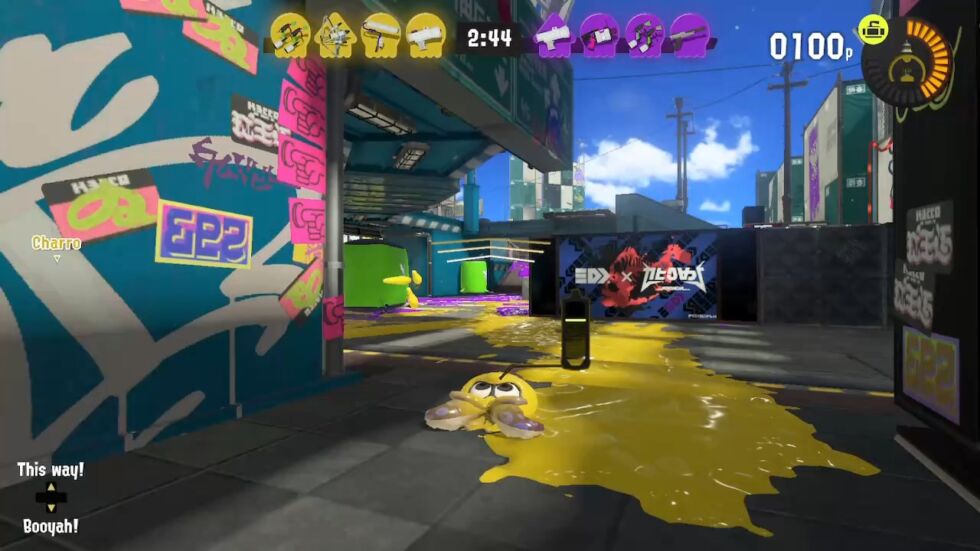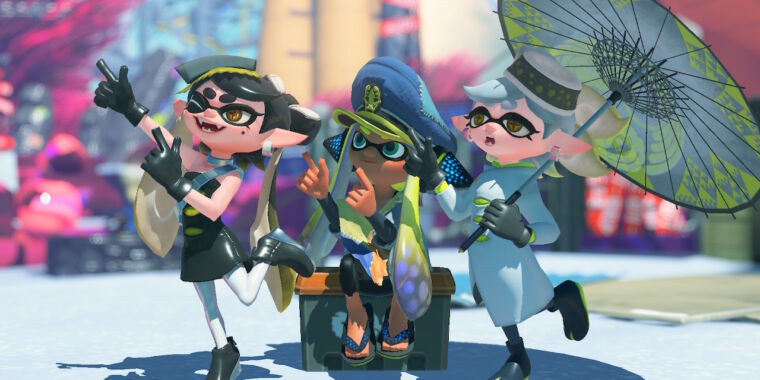Nintendo
In the crustacean-filled universe of Nintendo shooter series Splatoon, (sorry for the pun): Something fishy is going on.
I’m not sure what Nintendo was thinking with its push of Splatoon 3, this week’s brand-new sequel, as a replacement for 2017’s Splatoon 2. Where the last game added meaningful new weapons and modes to the series’ quirky online modes, this year’s new model adds a sprinkling of online-only content, which at best leaves the formula unperturbed and at worst is in dire need of rebalancing. And while Splatoon 2 and its 2018 expansion pack delivered some of the best solo campaign content of the Switch’s generation, Splatoon 3‘s equivalent is a slapdash mess.
Thanks to limited pre-release online testing, I can’t definitively review that half of the game, and I’m wondering how much of it can be redeemed with post-launch support. But I’m comfortable enough to say that Nintendo has dropped the ball for series fans and created an unwelcoming mess for newcomers.
A bad case of the crab (tank)s

To explain how the series works, allow me to adapt the phrasing I used in 2017:
Splatoon has a few disparate parts: an eight-hour single-player campaign; a range of ranked and unranked multiplayer combat modes; and a “Horde”-styled multiplayer challenge mode, in which you and up to three others team up to take out waves of enemies. The game continues to operate in a universe dominated by Japanese-hipster “squid kids” who dress in “fresh” outfits and shoot paintball guns all of the danged time.
The series’ default multiplayer mode, the “Turf War” team battle, returns as the touchstone Splatoon experience. Your team has three minutes to cover an arena’s floor with more of your paint color than the opponent’s, and any ground smothered in your color becomes “swimmable.” Every player can tap a button to switch between a gun-toting teenager or a fast-swimming squid. Squids can hide or swim through their corresponding color of ink.
Splatoon 3 is so similar to its forebear that I didn’t have to modify any of that text; all I did was remove a redundant reference to the series’ first game on Wii U in 2015. My Splatoon 2 review went on to document smart changes to its online systems, which included a hearty expansion of available weapons, significantly improved level designs that emphasized verticality and sneaky tactics, and that quirky waves-of-enemies mode (known as “Salmon Run”), which turned out to be a pretty fun, kid-friendly version of a mode made famous by the likes of Gears of War and Halo.
-
Trying (and failing) to kill the crab tank with a giant paintbrush.
-
Trying (and failing) to kill the crab tank with a pair of pistols.
What does Splatoon 3 add to online play? Not a ton. The biggest change is a new selection of “special attacks,” which can be activated in an online game after laying down enough ink or doing enough damage to foes in a single life. In my limited online testing, these abilities immediately felt unbalanced—though their tide-turning powers don’t figure as frequently in combat, thanks to how long they take to charge, so that impression is hard to quantify. One example is easy to point to, however.
The “crab tank” lets players temporarily turn into a slow, super-armored crab with temporary, unlimited ammo that shoots at a high rate. I’ve already found that this tank is all but unstoppable when it faces off against one foe at a time; it’s impossible to use the series’ strongest up-close attacks and take the crab down before it can blot out any up-close combatant with its stream of paint. The best a team can hope for is that their opponent triggers its crab tank mode while surrounded by opponents.

